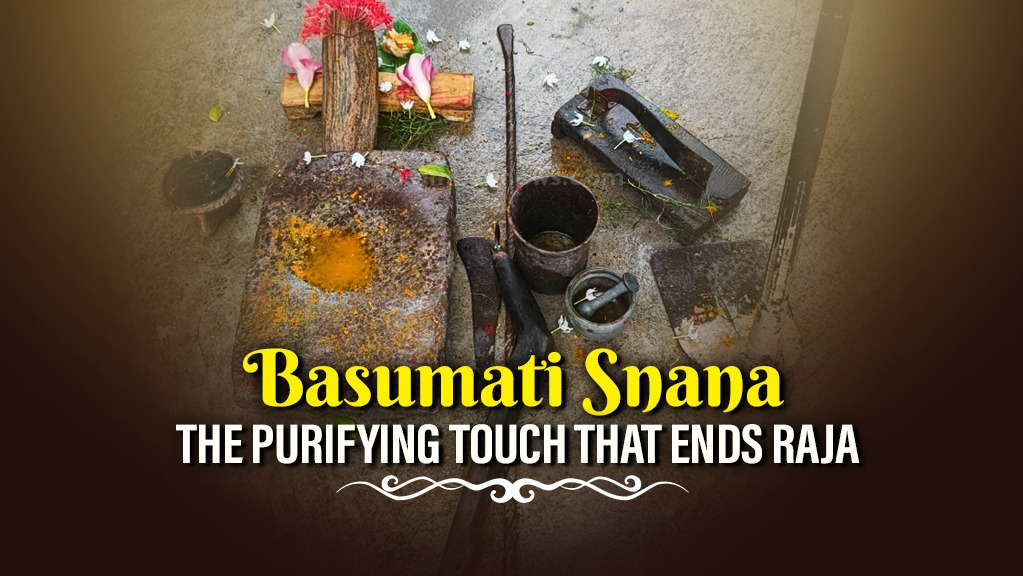

Bhubaneswar, June 17: As the sun rises on the fourth day of Odisha’s beloved Raja festival, homes across the state prepare for a deeply symbolic and sacred ritual—Basumati Snana, the ceremonial bathing of Mother Earth.
Celebrated with devotion and cultural fervor, Raja is more than just a festival—it’s a tribute to fertility, womanhood, and the rhythms of agriculture. Spanning three days, the festival observes the symbolic menstruation of the Earth, personified as Mother Basumati, allowing her a time of rest and rejuvenation. The fourth day marks the grand conclusion, when the Earth is ritually bathed and sanctified, ready once again to nurture life.
In the early hours of this final day, households engage in an intimate and heartfelt ceremony. A stone grinding slab (śilapuā), symbolizing the Earth Mother, is placed reverently on a wooden stool (pidhā). Around it, traditional items are arranged—kajalpatia leaves, iron farming tools, turmeric, vermilion, incense, mango leaves, fenugreek, and sacred grass (dūba). The scene is both sacred and homely, rich with generational memory.
Women lead the ritual, bathing the stone idol in turmeric water, applying sandal paste and sindoor, and offering fruits as tokens of respect and gratitude. This act is more than symbolic—it reflects a deep cultural understanding of nature’s cycles and the role of women as nurturers, both in the home and in the broader fabric of life.
Also observed on this day is the Mahalakshmi Snana, the ceremonial bath of Goddess Lakshmi. In many homes, this is known as Mahalakshmi Gadhuā or Shuddha Snana. The Mahalakshmi Pedhi, which has remained closed since the last Thursday of the holy Margasira month, is reopened—signifying a return to prosperity, purity, and auspicious beginnings.
Basumati Snana is not just a farewell to Raja—it’s a reaffirmation of Odisha’s deep connection to the land, to womanhood, and to the sacred cycles that sustain life. Through age-old customs and quiet rituals, the people of Odisha honor both the Earth and the feminine spirit, in all their generative power.